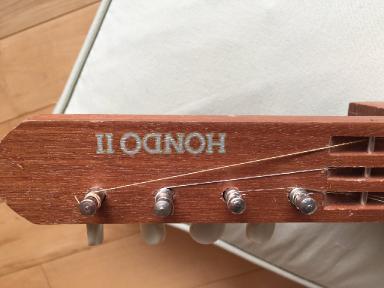Two maintenance questions that I'd appreciate help on:
1. Recently I brought a Hondo HD-2 dulcimer out of storage and replaced the strings that had been on since the early 1980s. Before changing the strings I'd noticed inconsistencies in the tuning gears. I would turn and turn the pegs but they didn't seem to change the string tension, then they would get very hard to turn, then past a certain point they would turn again. When I changed strings this problem became much worse. Within 30 minutes of changing the bass string, the string made a popping sound while I was playing, although it didn't break. It went very flat, though, and the tuning peg is very tight--so tight that I'm afraid to turn it. Also it looks like the entire tuning assembly is loose near the melody strings (I'm looking at the air space between the tuning assembly plate and the headstock in the side profile photo). I'm interested in suggestions on how to get the gears running more smoothly, and any other maintenance that this area might need. I'm also looking for tips on getting the strings to wind neatly around the pegs, and I'm not sure if the string end needs 'locking' (like on a mandolin) when it's first threaded through the peg hole?
Photos of the tuning mechanism:



2. I would like to put some oil or wax on the instrument to give it some protection (I live in a very arid place). In these photos note that the finish has worn off of the fingerboard. I'm wondering what to apply to the body of the instrument and to the fingerboard. The instrument has a matte/satin look and the body is plywood.


I know this is a lot of info and questions, and really appreciate any help in fixing these issues. Thanks in advance!





